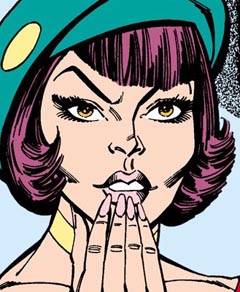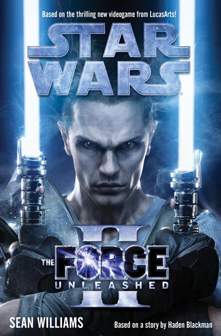Out of all the Legends stories that went unfinished due to Disney’s rebooting of the timeline, none is more of a cliffhanger than the “Force Unleashed” saga. At the end of 2010’s “The Force Unleashed II” – both the novel by Sean Williams and comic by Haden Blackman — Darth Vader is captured by Starkiller and the Rebel Alliance and secured in the Rogue Shadow for transport to Dantooine. The Rebels aim to interrogate him and make a deal with the Emperor. But “The Force Unleashed III” never happened (and it’s possible it wouldn’t have happened even without Disney’s purchase of the franchise in 2012), and we’ll never know how the story was intended to go unless Blackman spills the beans someday.
On the other hand, the “Force Unleashed” saga fits under the Legends banner quite well because the only way to reconcile these events with other “Star Wars” lore is to call them legends rather than historical facts. I can imagine Rebels, in the midst of dark days of fighting the Empire, sharing campfire stories about a ridiculously powerful Force wielder who gave birth to the Alliance, guided it to its first major victory by crashing Star Destroyers into the Kamino cloning facility and even defeated and captured Darth Vader.
Perhaps the Starkiller legend would get mixed up in the retellings with the facts of Luke Skywalker’s saga, so that Starkiller also visits Yoda and the dark side cave on Dagobah and teams up with the heroic Wedge Antilles in the pilot’s early days with the Alliance. Both of those things happen here – in the book’s “jump the shark” moment, Starkiller hitches a ride on Wedge’s Y-wing, mirroring Chewie’s trick in the “Chewbacca” comic — along with several other things that don’t mesh with established lore.
In “The Force Unleashed II,” Rebel Captain Juno Eclipse – who, as in the first installment, splits time as the main character with her love interest, Starkiller – helps the Alliance secure a relationship with Admiral Ackbar and the Mon Calamari, something that was already chronicled in the Goodwin/Williamson newspaper strips (specifically the story “Revenge of the Jedi”) between Episodes IV and V. (It’s interesting to note that Ackbar briefly encounters his old slave master, Tarkin, here. While it’s been established in his backstory that Ackbar was once Tarkin’s slave, I don’t believe those events were ever chronicled in a story.)
Also, the Rebellion – in a military assault that seems too massive considering their ragtag attack on the Death Star a year or so later – completely wipes out the Kamino cloning facility, which at this point seems to have been nationalized by the Empire. This contradicts not only the Disney canon — where it’s made clear that stormtroopers are not clones — but also the Legends canon — which strongly implied that stormtroopers are not clones. The theory goes that clones were needed to secure Palpatine’s emperorship, but it’d be too risky to keep them around afterward — and besides, it’s easier to maintain power than to secure power. As such, the Empire stopped producing clones and used enlistees and possibly conscripts in its army.


“TFU II” is a much more dramatic spin on the end of the clone trooper era, which is understandable considering that cloning is a central theme of both the book and comic. Unlike the first installment, where the comic and novel told identical stories, “TFU II” uses a “Shadows of the Empire” approach where the two media tell slightly different stories that cross over with each other: The book features Juno and Starkiller, whereas the comic features Boba Fett.
Boba Fett learns that a Kamino-based scientist (not a Kaminoan — perhaps evidence of the Empire’s nationalization of the industry) has been experimenting with Boba clones. The bounty hunter blasts all the clone tanks in similar fashion to Ripley in “Alien Resurrection.” Starkiller’s relationship to cloning (including the mystery of whether he is a clone) is less straightforward. In the first “Force Unleashed,” Starkiller (seemingly) dies and is resurrected halfway through the story. Then at the end, he (seemingly) dies again and is resurrected for the sequel.
As I noted in my review of the first installment, Starkiller is an impossible contradiction, and that becomes even more pronounced in “TFU II.” Starkiller can’t have survived the battle at the end of the first book, because he is in perfect physical condition and he has no memory of the recovery period. At the same time, he can’t be a clone because he retains all the emotions and feelings built up during his life – including his love for Juno. According to established “Star Wars” lore, a clone is a physical recreation of the original person; memories and experiences do not transfer. This is why the clone troopers – and Boba Fett — look like Jango Fett but don’t have his memories.
In my review of “TFU,” I noted that the Emperor theoretically could transfer Starkiller’s essence from a dying body to a living clone, as he does with Bevel Lemelisk in “Darksaber.” This is the only in-universe logic that can explain Starkiller’s resurrections. However, Blackman and Williams don’t allude to this in any of their writings, and in fact, the Emperor doesn’t appear in the sequel at all.
For all these reasons, the “Force Unleashed” saga – and especially the increasingly out-there sequel – plays best as a legend rather than as real events on any timeline, be it Legends or Disney’s. While I’m curious to know what Blackman had sketched out for “TFU III” (How did Vader escape? How was Starkiller resurrected? Does Maris Brood return to the story?), I’m not as crushed by “TFU’s” cancellation as I am by the cancelation of “The Clone Wars” TV show or the Ben-Vestara-Jaina-Allana story in the novels. While it’s not a bad read, “The Force Unleashed II” becomes increasingly hard to take seriously as it goes along.

